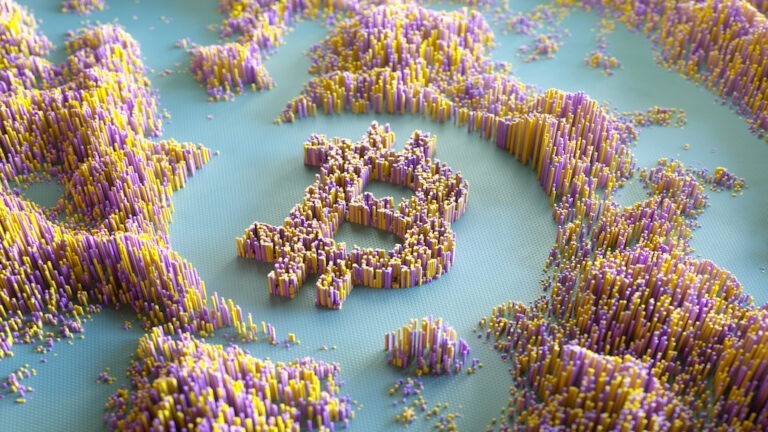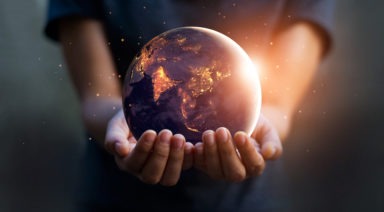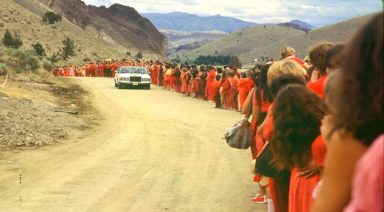It’s Time to Ask Whether We’re Buying Ethically Mined Crystals

Crystals have become a hot commodity, as an increasing number of people are realizing their multi-faceted healing benefits. This has come to include celebrities, those trying to capitalize off their demand, and the average Joe. But when a natural resource becomes so valued, it’s probably time to start asking whether we’re buying ethically mined crystals or conflict stones.
Buyers and sellers of gems and minerals converge annually in Tucson, Ariz. for arguably the largest convention of its kind. There, minerals are brought in from across the globe, sold to private collectors, or shop owners around the country. Attendees find large specimens, themed displays, and some of the most beautiful examples of just about every gem and mineral known to man.
But where do they all come from and how do they get there? That was a question The New Republic recently asked, wondering whether the acquisition of healing crystals should be viewed through the same lens as conflict diamonds.
And it’s a shrewd question, especially now that the industry has become such a profitable one, in which crystals appreciate at mercurial rates. In fact, it’s not unheard of for large, rarer specimens to double in value over the course of a few years – specimens that can fetch millions.
But with such value ascribed to these rocks, one would imagine there to be a paper trail delineating ownership and harvesting, though this is rarely the case. And those who supposedly have trusted dealers, refuse to reveal their names out of fear their competition will start buying from them, subsequently driving up their cost.
Ethically Mined Gemstones and Conflict Crystals
There are a number of regions throughout the world known for being rich sources of particular stones. One of the world’s largest quartz deposits is located between Arkansas and Oklahoma, and is home to Wegner Quartz Crystal Mines.
In 1978, Richard Wegner settled in western Arkansas in the Ouachita Mountain Range, just south of the Ozarks, before discovering his property sat on a vast bed of quartz. Wegner studied earth science, and refrained from divulging news of his property’s geologic bounty to any commercial mining operations, in order to preserve the environmental sanctity of his land.
Wegner excavated by hand before quickly realizing he needed heavy-duty equipment to keep up with the demand he was seeing at gem shows, most notably the one in Tucson.
Today, Wegner’s property continues to produce, though his primary goal is to find rare and unusual specimens. He has since bought and filled in the excavation of old mines to preserve the environment, while also planting tens of thousands of trees to offset carbon emissions accrued over the years.
But unfortunately, not all excavations are as conscientious as Wegner’s. Often gems and crystals are mined as byproducts of companies digging for more precious minerals, such as gold, copper, and cobalt. And saying these operations are detrimental to the environment would be an understatement.
Not only do these strip-mining jobs dump tons of toxic waste into bodies of water and the surrounding environment, but often they have destructive effects on local economies.
In Myanmar, the excavation of jade has become a humanitarian crisis nearly on par with blood diamond conflicts in Africa. There, in the foothills of the Kachin region between India and China, locals risk their lives on a daily basis to find small specimens of the gem, left in the wake of large mining operations.
Caught in the middle of a geopolitical struggle and dangerous environmental conditions, the gem is essentially the country’s only resource, and the primary source of all jade in the world. But despite the plethora of money the mineral fetches on the international market – some $31 billion in 2014 – most profit goes into the pockets of corporations or toward funding a war between guerillas and the military.
But the damage doesn’t stop there, mining operations in Myanmar are also environmentally destructive. Environmental protection laws go unenforced, decimating the land, while mountains are reduced to rubble.
But the issue isn’t just abroad, domestic mining operations are equally damaging to the Earth. New Mexico is notorious for its environmentally harmful copper mines that just so happen to produce crystals and precious gems as well. These mines can leak heavy metal byproducts and acids into the water table, or require massive resources to contain them.
And according to The New Republic, the valuable byproducts that are sold to the crystal, gem, and mineral industry aren’t disclosed, so there’s no way of telling if they came from one of these strip-mines.
The Berkeley Pit in Montana is another infamous mine in the U.S. known for its horrific environmental track record. Once a highly profitable source of iron ore, it is now tapped of precious resources and filled with highly toxic water. The water is so poisonous that authorities regularly fire guns to scare away birds, after several hundred geese died in 1995 when they stopped to rest on the water.
We Have to Demand Ethically Mined Gemstones and Crystals
How can a crystal have healing power if someone’s life was put at risk or killed to get it into your hands? If anything, it could retain that negative energy, defeating the purpose of buying it in the first place. If a child, paid next to nothing and forced to work in a mine, excavated your crystal, how can it have the potential to heal? Wouldn’t that negative energy instead be passed on to you?
This is why we must demand ethical standards and a clear lineage ensuring they’ve been properly sourced.
The aforementioned Wegner Quartz Mine in Arkansas is a great example of an operation willing to take the extra step to ensure ethical practices, while also being mindful of its environmental impact. This model needs to continue.
Many have started to petition some of the more popular companies that sell crystals and precious gem packages to ensure their crystals are being sourced properly and ethically. Often these companies allege their crystals have been cleansed with sage and reiki, but does that mean anything if the crystal came from a mine pillaging and polluting the planet?
It’s time to demand ethically sourced crystals from suppliers and refuse those from questionable or unknown mines. Collective action can change disreputable practices and lead to a better future.
How Cryptocurrencies Like Bitcoin Can Democratize Money and Society

As cryptocurrencies like Bitcoin break new records seemingly every day, could this lead to a financial and cultural revolution? Or are we not quite there yet?
Cryptocurrencies have recently gained popularity as an alternative to conventional monetary systems. Blockchain is a system in which a record of transactions made in Bitcoin and other cryptocurrencies are maintained across multiple computers that are linked in a peer-to-peer network. Cryptocurrency has no centralized bank controlling the flow of money, but rather a decentralized system controlled by algorithms.
Crypto has been hailed as a way to democratize finances for all, not just wealthy elites. But with the rise in popularity, what are the potential pitfalls of these online currencies?
“Blockchain is a way of digitally marking the development and moving around of this money—you’re making sure that it can’t be counterfeited. They do it in such a way that it’s anonymous and decentralized, but secure,” Zeus Yiamouyiannis, author of Transforming Economy, said.
“The current monetary system can be manipulated; the supply can be manipulated to benefit very few people over the many. As we’ve been seeing over the past few decades, the same pattern keeps emerging and it’s growing, and that is greater and greater gambling by the big boys, to the point where they inherently fail through their greed. And guess who bails them out 100 percent of the time? The little guy who had absolutely nothing to do with it,” Yiamouyiannis said.




































